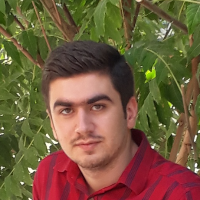An Integrated Unsupervised Change Detection Method Based on the Discrete Wavelet Transform Fusion and An Improved Markov Random Field Model
Change detection is one of the most important processes in photogrammetry and remote sensing, in which occurred changes in a same geographical area are identified over time. Forests are one of the national assets of any country that has a vital role in climate change, groundwater formation and prevention of floods and soil erosion. Thus, an accurate change detection method should be exploited to monitor and maintain forest regions. In this paper, an efficient unsupervised change detection method is proposed for this purpose. Here, two bitemporal sattelite images, acquired at the forest areas of Unitted stasted and Australia are employed to evaluate the proposed change detection method. In the first step of the proposed approach, discrete wavelet transform was used to generate an efficient change index by fusing of two difference images derived by NDVI and GNDVI vegetation indices. Anisotropic diffusion filtering was then applied to obtain robust change index in which noises was reduced while change regions was highlited. In the next step, the generated index was segmented into changed and unchanged classes using an improved k-means algorithm. Finally, improved MRF model initialed with the initial change map is employed to generate final change map. The proposed MRF model include two novel improvements in the main energy function, resulting in preserveing changed region details. The proposed improved MRF contained superiority of 0.49% and 0.61% compared to traditional MRF in datasets 1 and 2, respectively. The proposed MRF also outperformed Otsu, PCA-kmeans, GAFCM and GMMMRF methods, so that reduced the total error rate by an average of 0.93% and 5.31% in data sets 1 and 2, respectively. In general, the proposed method has a high capability for accurate identifying changes for vegetated areas.
-
An Integrated Satellite Stereo Image Registration Method Based on KAZE, VFC and TPS Algorithms
A. Mohsenifar*, A. Sedaghat, A. Mohammadzadeh
Journal of Geomatics Science and Technology,



